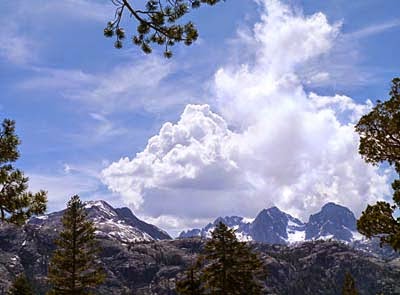 |
| The bottom 30 feet of the tallest tree in the world 363 feet tall |
On our travels this year we have seen some
of the world’s largest trees, the Giant Sequoias and some of the world’s oldest
trees, the Bristlecone Pines so it was only fitting that we visit should see
some of the world’s tallest trees, the Redwoods.
Redwoods and Giant Sequoias are both members of the Redwood Family. While Giant Sequoias are among the world’s largest trees and can live up to 3,200 years old, Redwoods live 'only' around 2,000 years! But they are the world's tallest trees.
 |
| Giants of the forest |
 |
| Redwood sorrel, a clover like plant that often 'blankets' the floor of Redwood forests |
Once upon a time back in the age of dinosaurs, fossil records indicate that Redwoods grew naturally in many places across the Northern Hemisphere. Now all that remains is a small coastal fog belt 5 – 35 miles wide extending 450 miles from extreme southwest Oregon to central California. Before the arrival of European settlers to North America, this coastal strip of land was covered in Redwoods but today they grow in only a fraction of that area.
 |
| Looking up to the canopy |
As we drove the scenic “Avenue of the
Giants” (the park road through Humboldt Redwoods State Park) passing through
the groves of immense Redwoods we couldn’t help but compare it to other areas
outside the park where most of the Redwood groves were gone. Many of the Redwood forests have been saved
but they are mainly in the state and national parks with very few, especially
the old growth groves, existing outside the parks. It can’t help but make you
sad. But the Save-the-Redwoods League
has been working tirelessly since 1917 to preserve areas of primeval Redwood
forests. To date the League has
protected 170,000 acres of Redwoods in 35 California State Parks and two
national parks.
 |
| Visitors to the forest dwarfed by the towering Redwoods |
 |
| Fallen log gives life to new plants |
A Redwood forest must be experienced. In some places the trees are so tall and
thick that little light reaches the forest floor. Often the forest is shrouded in mist or fog. It is an effort to see to the tops of the
trees – if you even can. Fallen giants
have become a nursery for new plants. Mosses, ferns, flowering plants, shrubs, and even new Redwoods cling tightly and draw life from the ‘old bones’ of the ancient trees. Walking through these magical forests is an
experience of wonder and for some, renewal. Words and pictures can only hint
at the mystery.
David's Stats:
Days Hiked 3
Total Miles Hiked 7.56
Ave. Miles per Day 2.52
Total Elevation Gain 767
Ave. Elevation Gain per day 256
Days Hiked 3
Total Miles Hiked 7.56
Ave. Miles per Day 2.52
Total Elevation Gain 767
Ave. Elevation Gain per day 256














































